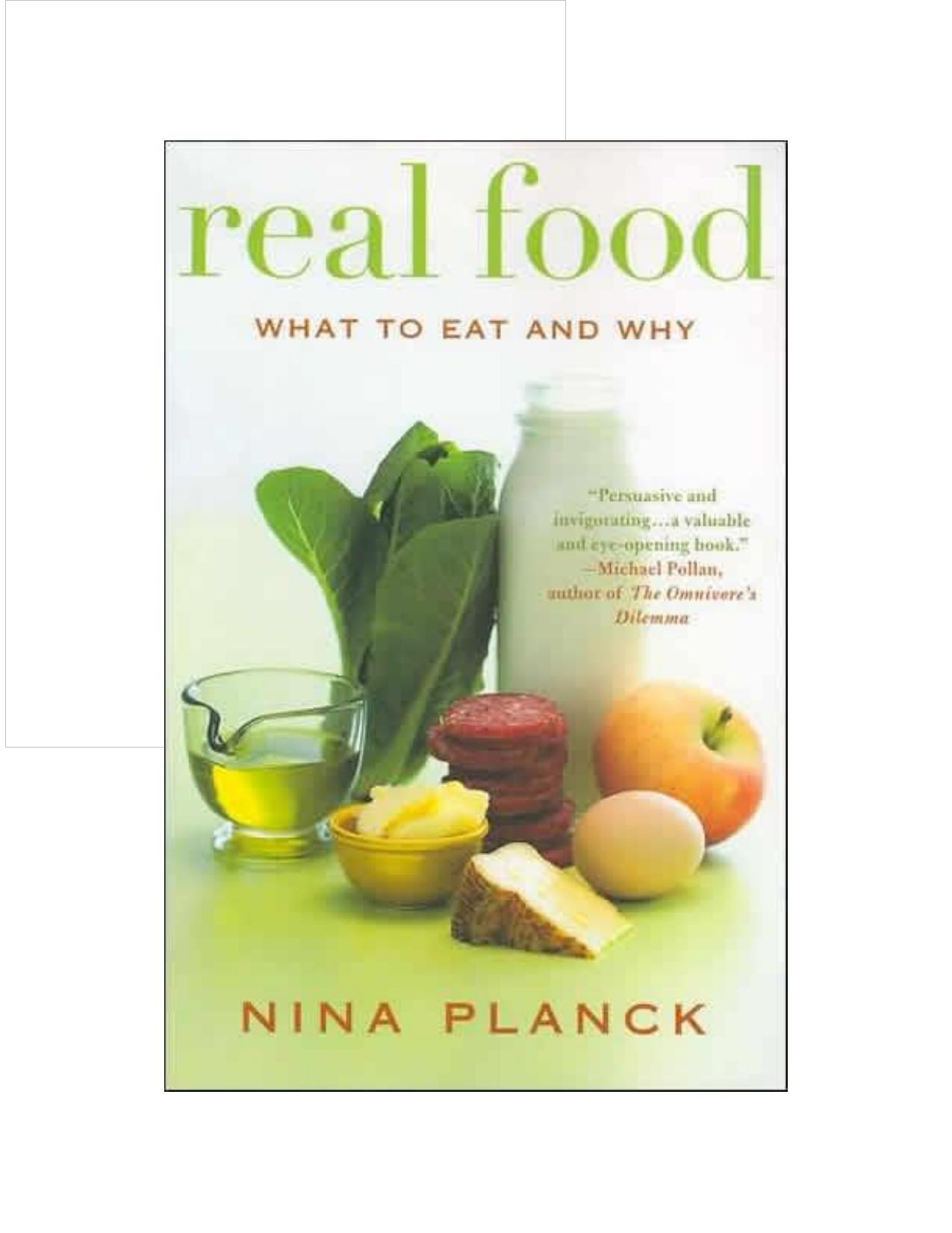Real Food by Nina Planck

Author:Nina Planck
Language: eng
Format: epub, mobi, pdf
Publisher: Bloomsbury Publishing Plc
Published: 2009-05-03T16:00:00+00:00
6
Real Fats
Some Surprising Facts About Fats
THE BAD FOR YOU COOKBOOK, published in 1992, in the midst of the frenzy for "light" cooking, extolled lard, eggs, butter, and cream— for pleasure if not health. Chris Maynard and Bill Scheller presented their favorite recipes for shirred eggs, lard pie crust, and trout with bacon with unguarded enthusiasm— and this disclaimer: "As for heart attacks . . . we are not going to make any hard-and-fast recommendations here because we are not doctors and— far more important— we are not lawyers."
How little has changed since then! Many Americans are still terrified of eating fats and feel guilty when they do. Monounsaturated olive oil makes the official list of "good" fats, yet few will defend saturated fats. Traditional fats are certainly more fashionable recently. The television chef and restaurateur Mario Batali made a splash putting lardo (cured fatback) on his menus, and food writer Corby Kummer praised lard in the op-ed pages of the New York Times. "Here's my prediction," wrote the trend-spotting columnist Simon Doonan in the New York Observer, after he saw Kummer's piece on lard. "This trend is not only going to catch on, it's going to sweep the nation."
Well, I hope so. Lard may be in vogue, but hardly anyone knows that lard is good for you. When I began to read about fats with an open mind, I learned some curious things. Consider this: lard and bone marrow are rich in monounsaturated fat, the kind that lowers LDL and leaves HDL alone. Stearic and palmitic acid, both saturated fats, have either a neutral or beneficial effect on cholesterol. Saturated coconut oil fights viruses and raises HDL. Butter is an important source of vitamins A and D and contains saturated butyric acid, which fights cancer. As for the vaunted polyunsaturated vegetable oils, we eat far too many. Refined corn, safflower, and sunflower oil lower HDL and contribute to cancer.
Back when I took the warnings about saturated fats to heart, I cooked everything— from roast chicken to salmon, mashed potatoes to polenta— with olive oil. After I did a little homework on fats, life in the kitchen got more interesting. What fun to rediscover— and in some cases learn for the first time— how to cook with traditional fats like butter and lard. Now my kitchen is stocked with local butter, lard, duck fat, and beef fat, as well as exotic oils of coconut and pumpkin seeds.
Fats have many roles in cooking. Perhaps most important, they carry and disperse flavor throughout foods. Olive oil takes up the flavor of chili, garlic, or lemon and spreads it through the dish. Chicken breast has less flavor than dark thigh meat because it contains less fat, and modern commercial pigs, bred to be lean, make for dry and flavorless pork compared with traditional breeds. The Bad for You Cookbook authors want to know: "How did the fat get bred out of hogs to the point where you'd have to render three counties in Iowa
Download
This site does not store any files on its server. We only index and link to content provided by other sites. Please contact the content providers to delete copyright contents if any and email us, we'll remove relevant links or contents immediately.
How to Be a Bawse: A Guide to Conquering Life by Lilly Singh(7430)
Deep Work by Cal Newport(6962)
The Longevity Diet by Valter Longo(5039)
The Fat Loss Plan by Joe Wicks(4874)
The Four-Pack Revolution by Chael Sonnen & Ryan Parsons(3945)
The Ultimate Bodybuilding Cookbook by Kendall Lou Schmidt(3906)
The French Women Don't Get Fat Cookbook by Mireille Guiliano(3629)
Super Food Family Classics by Jamie Oliver(3383)
Not a Diet Book by James Smith(3373)
Factfulness_Ten Reasons We're Wrong About the World_and Why Things Are Better Than You Think by Hans Rosling(3216)
Turn Up Your Fat Burn! by Alyssa Shaffer(3195)
Self-Esteem by Matthew McKay & Patrick Fanning(3115)
Tom Kerridge's Dopamine Diet: My low-carb, stay-happy way to lose weight by Kerridge Tom(3078)
Body Love by Kelly LeVeque(3029)
The Unbecoming of Mara Dyer by Michelle Hodkin(3018)
Tone Your Tummy Type by Denise Austin(2811)
The Fat Chance Cookbook by Robert H. Lustig(2810)
LL Cool J's Platinum 360 Diet and Lifestyle by LL Cool J(2707)
Men's Health Best by Men's Health Magazine(2571)
